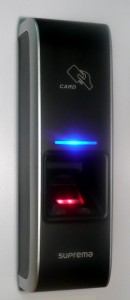 Wireless access control has been a constant source of conversation for us lately. Part of that is because of the boom we’ve seen in our Electromechanical Solution Department. Wireless access control is a huge part of the security industry right now, but exactly where to start when you want to install one can understandably overwhelm the buyer.
Wireless access control has been a constant source of conversation for us lately. Part of that is because of the boom we’ve seen in our Electromechanical Solution Department. Wireless access control is a huge part of the security industry right now, but exactly where to start when you want to install one can understandably overwhelm the buyer.
Just like with any subject, the more you know, the less scary it all seems. That’s why with wireless access control a good place to start is basic terminology. There are many, many components that go into a wireless access control and if you’re educated on the terminology, you’re less overwhelmed from the get-go!
Wireless Access Control – Terminology
Weigand – Weigand is an access control communications protocol, most commonly seen in its 26 bit format. In even easier terms? It’s one of the languages modern locks can use to share or receive encrypted security credentials.
RS-485 – The RS-485 is another way to transmit and receive encrypted data. This protocol is used widely in the IT industry. RS-485 is seen as a more secure method to transmit data than Weigand and has been adopted by many wireless lock manufacturers.
Prox/Proximity – Proximity readers read a credential (Weigand, iClass, MIFARE) and then signal the system to perform a function.
Keypad – Keypad wireless locks are typically standalone locks that aren’t integrated into a IT/Security network. They use codes entered through the keypad.
Standalone – Not all wireless locks are required to be networked. Standalone locks aren’t networked and all codes, permissions, and audits are taken directly from the lock. This can be done with the use of a laptop and is essentially a way to download the information from the lock onto another source.
Credentials – Credentials can be anything from a magnetic strip on a security card to the code you punch in at the lock. Of course, if you say “credentials” instead of “that card you swipe at the lock” you just sound fancier.
The process to find the right fit for your wireless access control needs can be a challenge and a large source of frustration. Once you know what your needs are (how many people will be use your system, whether or not you have a need to audit the system’s use, whether you need to expand your system at any point) you can begin to make decisions and move forward with your new wireless access control system!
Of course, any questions can be directed to us and we can point you in the right direction!
